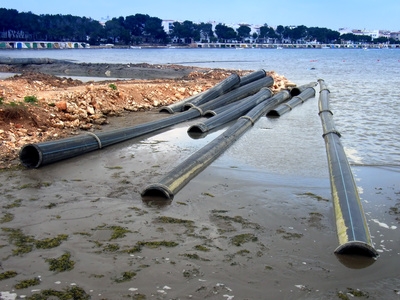
Measuring pipe--stainless steel or otherwise--isn't quite as straightforward as you might think. Although common sense would dictate that a 3/4-inch pipe should be 3/4 of an inch in diameter or some other dimension, this isn't always the case. American pipe manufacturers size their products according to the American Standards Association's (ASA) Nominal Pipe Standard, which actually relates more to the pipe's pressure capabilities and flow than its actual size. While many plumbers and auto technicians can identify stainless, standard and copper tubing visually, less practiced users will likely need to measure the tubing and refer to an official ASA sizing chart to identify it.
Wipe down the jaws of your dial caliper with a rag to remove dirt and grit, which can skew your measurements. Clean the inside and outside of your pipe as well. If you cannot fit your finger into the pipe to clean it, wrap the rag around a pencil or pen and use it to clean the inside of the tube.
Zero out your gauge by closing the jaws and rotating the dial face until it reads zero. Don't neglect this step; dial calipers can and do go out of adjustment, especially when you push the jaws closed instead of closing them with the thumb-wheel.
Open the jaws with the thumb-wheel, then close them on the outside of your pipe. Read and record the inch measurement on the ruler-section (which reads in 0.100-inch increments) between the jaws, then read the measurement on the dial and add the two together. Example: Your ruler reads just past the No. 6 hash mark, which equals 0.600 inch. The dial stops at 75, so the tube's outside diameter is equal to 0.675-inch.
Measure the thickness of the pipe wall, also known as the "gauge" or "schedule." If you can't fit the caliper jaws inside the tube, slide the pointed inside-measuring side of your calipers into the tube and measure its inside-diameter. Subtract that measurement from the outside diameter and divide by two to get the tube-wall thickness.
Compare your outside-diameter measurements and wall-thickness measurements to an ASA tubing chart to determine the tube size and schedule. You can find these charts in the References section below, or by entering the words "stainless steel tube size chart" into your web browser.